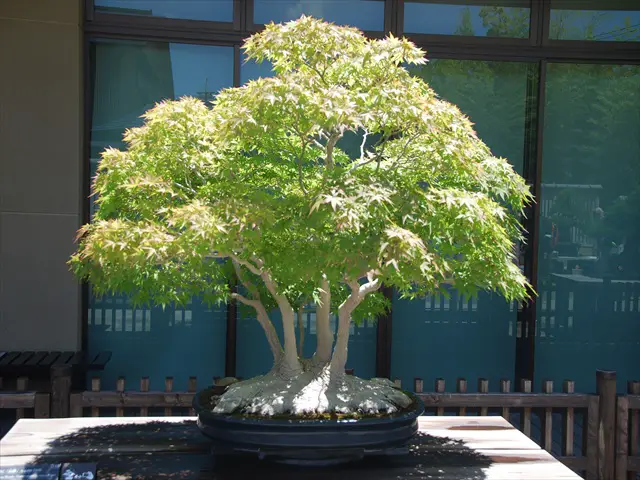Japanese maple has very beautiful bright green leaves in summer, which turn red in fall. This is why many people love this tree and you might be wondering if you can grow it inside your house.
As a general rule, Japanese maple trees cannot live indoors soundly because they need plenty of direct sunlight and circulating fresh air. If you must, make sure they get at least 3 hours of sunlight a day with plenty of fresh air and temperature changes during the day.
What is Japanese maple tree?
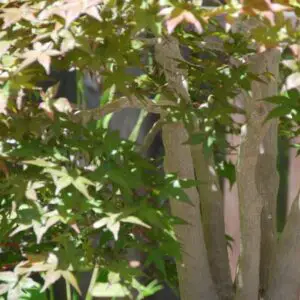
Japanese maple tree
Japanese maple at a glance
| Common name | Japanese maple |
| Latin name | Acer palmatum |
| Native area | Japan, Korea, China |
| Mature size in nature | More than 30 feet (10m) |
| Cold tolerance | High |
| Heat tolerance | High |
| Drought tolerance | Fairly low |
| Sun exposure | High – partial shade |
| Soil type | Well-drained |
| Ground/pot | Both |
| Fertilization | Unnecessary※ |
| Watering | Necessary when soil drys up |
| Life span | Well over 100 years |
※Grows slower but well without fertilization.
Varieties of Japanese maple tree
Japanese maples (Acer palmatum) are native to Japan, Korea, and China and have a lot of varieties mainly due to human cultivation to enjoy their autumn leaves. As bonsai cultivars, there were more than 200 species before WWII in Japan, which is now reduced, but still a large number, to 50 or so varieties. The major ones include:
- Acer palmatum subsp. matsumurae (Koidz) Ogata (native to Japan)
- Shisihgashira
- Seigen
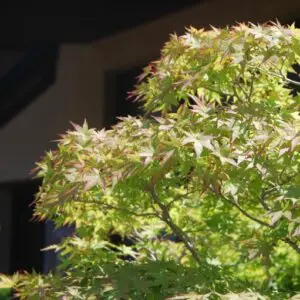
Acer palmatum subsp. matsumurae (Koidz) Ogata
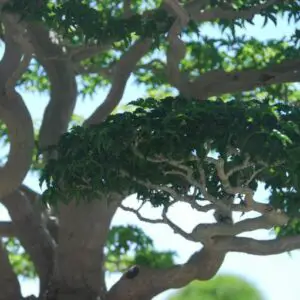
Mapple-Shishigashira

Maple-seigen
Can a Japanese maple live indoors?
Japanese maple trees cannot thrive well indoors because they need plenty of direct sunlight and circulating fresh air.
Japanese maple trees are not indoor plants like ficus or jade, which can grow pretty soundly inside the house. They need plenty of direct sunlight and circulating fresh air as normal plants do.
Sunlight

Japanese maple trees are photophilic plants; i.e. plants that grow in open places and cannot withstand a long period of time in the shade. It is true, especially for the ones planted in containers, that strong sunlight in summer should be avoided. But it does not mean they do not need any direct sunlight.
In fact, they need to be under the sun for at least a couple of hours a day. The protection from the strong sunlight is to avoid the leaves to be “tanned” – i.e. their color turns yellow or brown – so that when the fall comes, we can enjoy the change in color.
Fresh air

Japanese maple trees need carbon dioxide in the air for photosynthesis to create and store energy. This means they need a constant supply of new carbon dioxide coming into their growing space. Without moving air, carbon dioxide can be rapidly removed from the surrounding air by photosynthesis.
For reference, please read the following post.
Where in the house can I grow Japanese maple trees?
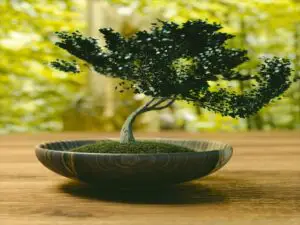
If you really want to grow Japanese maple trees indoors, placing them on the balcony or alongside the south-facing window is a good idea (or the only option). For air circulation, windows/doors have to be able to open all day.
Other things to consider are-
- Make sure they get at least 3 hours of sunlight a day.
- Make sure they always get plenty of fresh air.
- Make sure there are enough temperature changes. Leaves start to change color when the daily minimum temperature drops below 46° F (8°C). To make the color change brightly, the temperature during the day should be around 70° F to 80° F (20 to 25°C) and around 40° F to 50° F (5 to 10° C) at night.
- Make sure the leaves do not dry out and get enough humidity for the color change as well.

